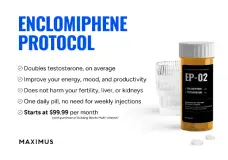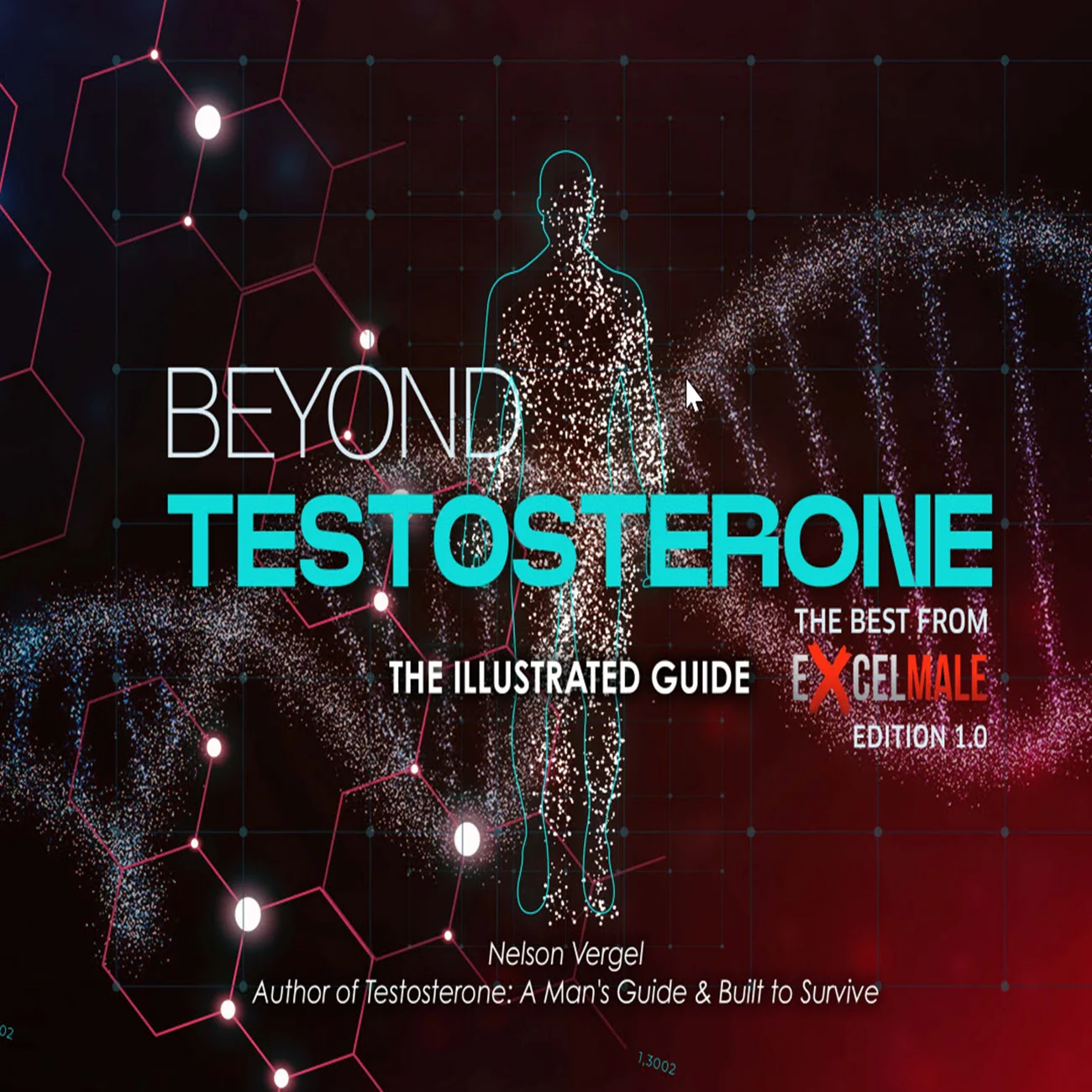Defy wanted to start you on 150 mg T/week wonder how that would have worked out!
Remeber I stated that the most common starting dose is 100 mg T/week or better yet 50 mg T twice-weekly.
Look at the robust T levels you achived injecting 100 mg T split 3X/week!
As I have been preaching for years on the forum most men can easily achieve a healthy let alone high trough FT injecting 100-150 mg T/week especially when split into more frequent injections.
You also have those outliers who cam still a achieve a robust trough FT injecting <100 mg/week splt into more frequent injections.
Now regarding your current labs/sides.
First off you never even tested at the true trough (lowest point) before your next injection.
You are injecting 100 mg T splt 3X/week (M/W/F).
Your true trough on said injetcion protocol would be Monday morning 72 hrs post-injection.
You had your blood work done Wednesday morning roughly 48 hrs post-injection.
As you can see you are hitting a healthy high-end TT 798 ng/dL and with lowish SHBG 18.8 nmol/L your FT is high but keep in mind you never tested your FT using a accurate assay the gold standard Equilibrium Dialysis.
You had it tested using the direct immunoassay which should not be used/relied upon.
Not sure why you did not just pay out of pocket and test your FT using what would be considerwed the most accuarate assay Quests Equilibrium Dialysis which is offered through Nelson's
discounted labs.
I stressed this point in one of your other threads!
Always need to know where yurn trough FT level truly sits!
This is critical!
Even then if we calculate your FT using the linear law-of-mass action Vermeulen by plugging in your high-, end TT 798 ng/dL, lowish SHBG 18.8 nmol/L and Albumin 4.3 g/dL you would be hitting a top-end FT 24.7 ng/dL.
View attachment 52338
The only way to know where FT truly sits is to have it tested using the most accurate methods/assays (ED/UF) especially in cases of altered SHBG.
The gold standard would be Equilibrium Dialysis.
If one did not have access (highly doubtful if you reside in the US) to such then you would need to use/rely upon the go to calculated linear law-of-mass action cFTV which will give a good approximation but keep in mind it tends to overestimate FT.
As I have stated numerous times on the forum you always have the option of using/relying upon calculated FT which would be the linear law-of-mass action cFTV as it has already been validated twice (1st time was done using TT/SHBG assays no longer available) and was then eventually re-validated using current state-of-the-art ED method (higher order reference method) let alone more recently against CDCs standardized Equilibrium Dialysis assay.
Yes it tends to overestimate slightly but it is nothing to fret over!
*Calculated free T using high-quality T and SHBG assays has been considered the most useful for clinical purposes [99]. All algorithms suffer from some inaccuracies, including the variable quality of SHBG IAs [100], not replicating the non-linear nature of T-SHBG binding, different and inaccurate association constants for SHBG and albumin binding [101], and variable agreement with equilibrium dialysis results [99,100]. However, until further developments in the field materialize, the linear model algorithms [in particular, the most used Vermeulen equation [102]] appear to give, despite a small systematic positive bias, acceptable data for the clinical management and research[37,103]
Again you are hitting a top-end cFTV 24.7 ng/dL but chances are your FT would be lower than that if you had it tested using the most accuarate assay ED but it would still be on the higher-end.
Even than this is 48 hrs post-injetion not your true trough 72 hrs post-injection so your true trough would most likely be ilower as in the upper teens!
You are definitely hitting a good FT level 48 hrs post-injecion but keep in mind your peak TT/FT and estradiol would be higher.
I see no issue with running a FT where yours sits and this is not even your true trough but the problem here is unfortunately you have been struggling with numerous sides and you are over 2 months in!
No denying that your FT levels most of the week are going to be high/high-end so of course there would be room to bring it down if need be.
I and many would prefer to run a high-end trough FT but again need to keep in mind your injection frequency as there is a huge diffenece between one hitting a high-end/high trough FT injecting daily vs twice-weekl vs once weekly!
Many tend to overlook this which can backfire on you in the long-run!
Downfall here is there are numerous things to look at.
Would not put the sole blame on estradiol let alone injecting strictly sub-q for the side-effects you are experiencing.
Some of the sides you mention (mood, libido and erectile function) can be negatively impacted by lack of quality sleep.
Hard to gauge a protocol when you are not sleeping well!
Could you be one of those who does not fare well running higher-end/high FT levels most definitely but you would need to lower your weekly dose to bring down your FT.
Could you be one of those outliers that falls into the not faring so well when injecting strictyly sub-q.....sure!
The only way you woild know is to try injecting IM.
Could you be one of those who may need to inject more frequently in order to clip the peak--->trough and achieve more stable blood levels throughout the week sure but you would need to manipulate your injection frequency.
I never liked the 3X/week protocol and would have rather injected EOD.
With all that being said remember when I told you the first 6 weeks means nothing when looking at the bigger picture.
Hormones will be in flux during the weeks leading up until blood levels have stabilized (4-6 weeks TE/TC) and it is common to experience ups/downs along the way as the body is trying to adjust.
Even then once blood levels have stabilized it will still take a few months for the body to fully adapt to it's new set-point and this is the critical time period when one needs to gauge how they truly feel overall regarding relief/improvement of low-T symptoms and overall well-being.
Every protocol whether first starting TTh or tweaking (increasing/decreasing dose) needs to be given a fighting chance 12 weeks before claiming it was a success or failure.
Could even say 3-4 months.
The only time a protocol should be tweaked 6 weeks in is if your trough FT is too low (highly unlikely) in most cases or if your trough FT is absurdly high and you are experiencing bad sides.
If you are hitting a healthy or high-end trough FT 6-8 weeks in and stil experiencing some issues I would stil give it some time before throwing in the towel.
If it were me I would just bite the bullet but for many they would tend to jump the gun as they lack the understanding of how exogenous T works.
I had a bumpy ride when I first started especially with mood, libido and erections but I stuck with it and as time went on things improved greatly.
Took a while for my body (mentally/physically) to settle in.
I can inject before bed and sleep like a baby.
You have numerous options here but I would not be so dead set on needing to lower your dose just yet.
You know your body best so do what you feel is the most sensible move!
Look over my replies again!
After years of trying other methods, and dodging going full go, I am finally starting a TRT regiment very soon. I finished my intake in my labs with
Defy, and I have my initial consult on Monday afternoon. Looking forward to getting a full rundown of what they think of my labs.
After looking at my results, a couple things stand out. Obviously my total T and my free T are awful. My SHBG is low and my fatty liver numbers are kind of high. I just got off iron supplements a few days ago and we’re on the one I took my labs. I was dealing with a bleed that had to depleted my iron and ferritin...
hting its relevance in preventing misdiagnosis and overtreatment of male hypogonadism. Recent findings While there is consensus on measuring total T – comprising sex hormone-binding globulin (SHBG)-bound, albumin-bound, and free T – as a first step in diagnosing male hypogonadism, evidence...

journals.lww.com
INTRODUCTION
Clinical practice guidelines on the diagnosis of male hypogonadism focus on clinical signs and symptoms of androgen deficiency, as well as biochemical assessment of low circulating testosterone (T). However, there is a longstanding debate, as well as a persisting controversy concerning biochemical assessment of serum T and in particular the use (and misuse) of free T. Free T, as advocated by the free hormone hypothesis, represents...














